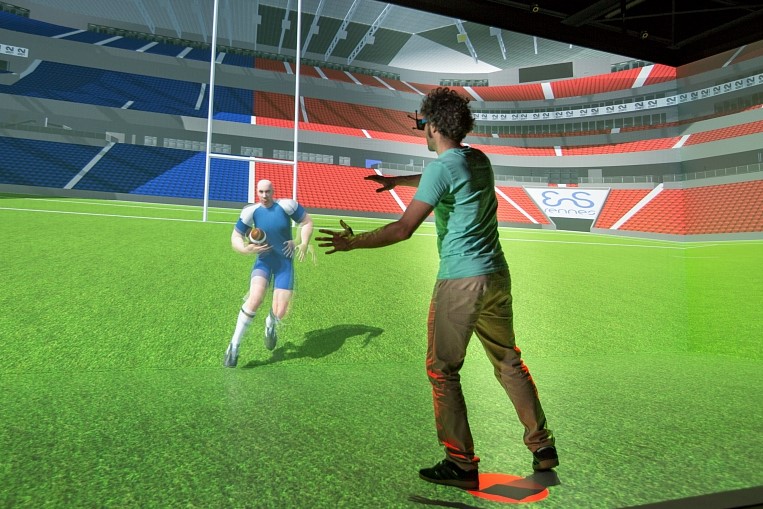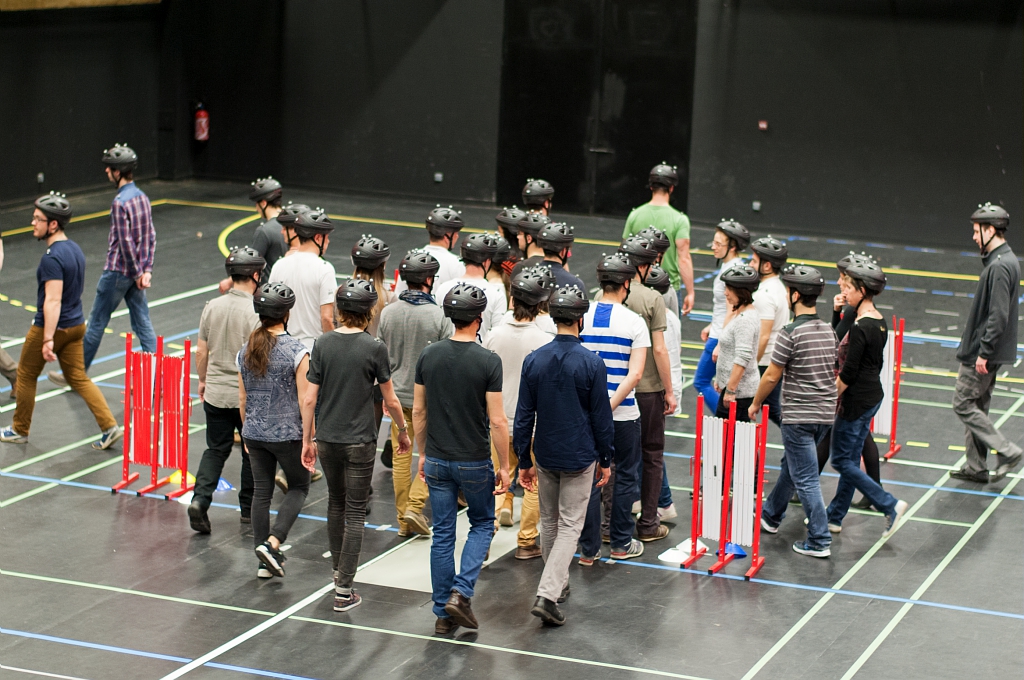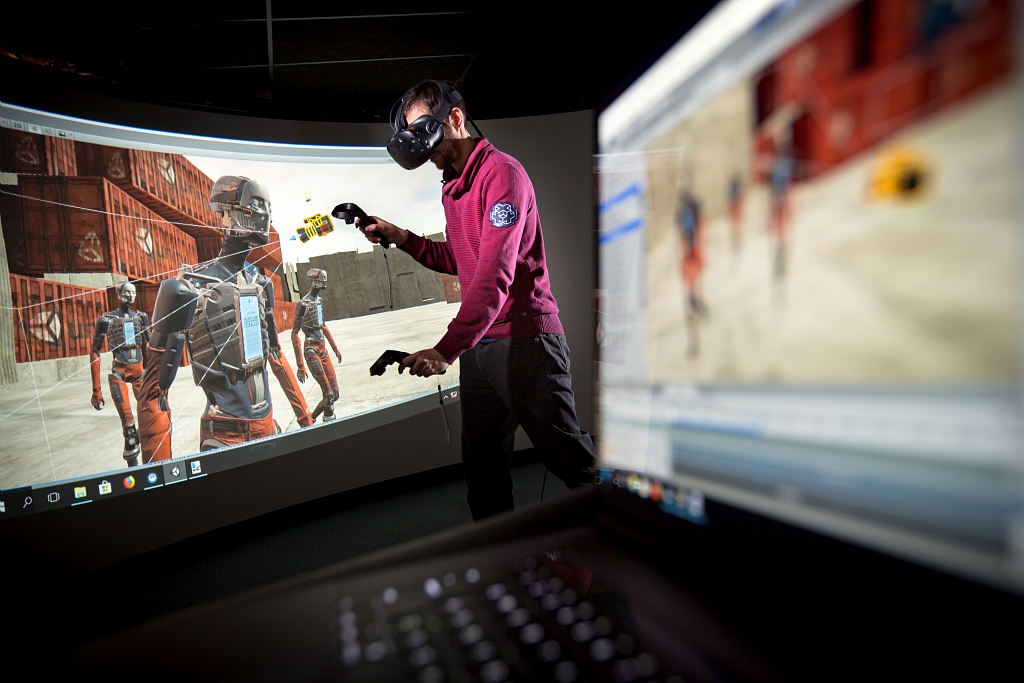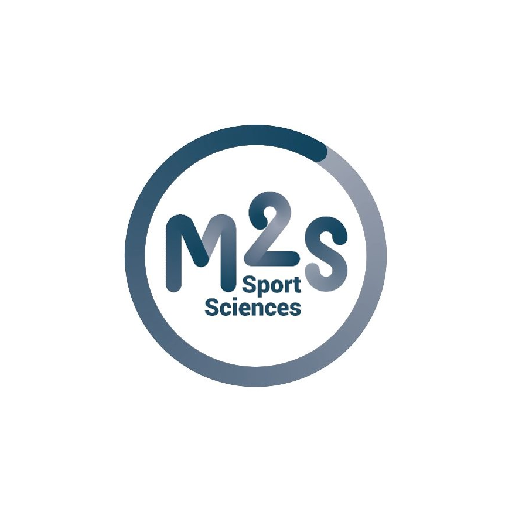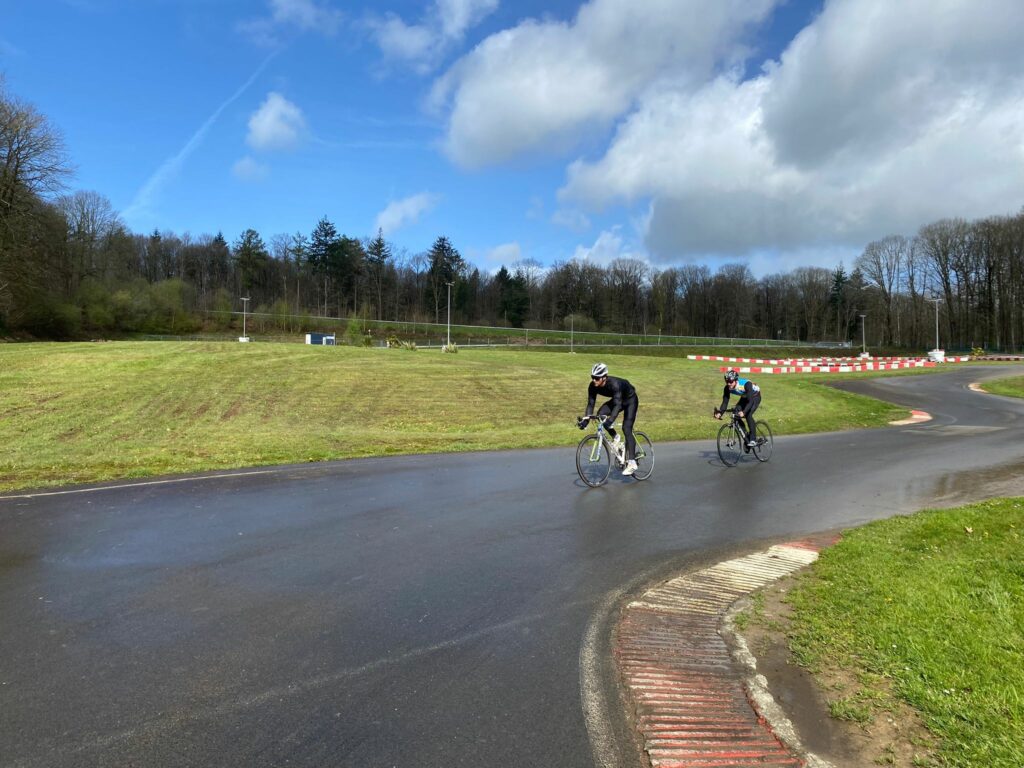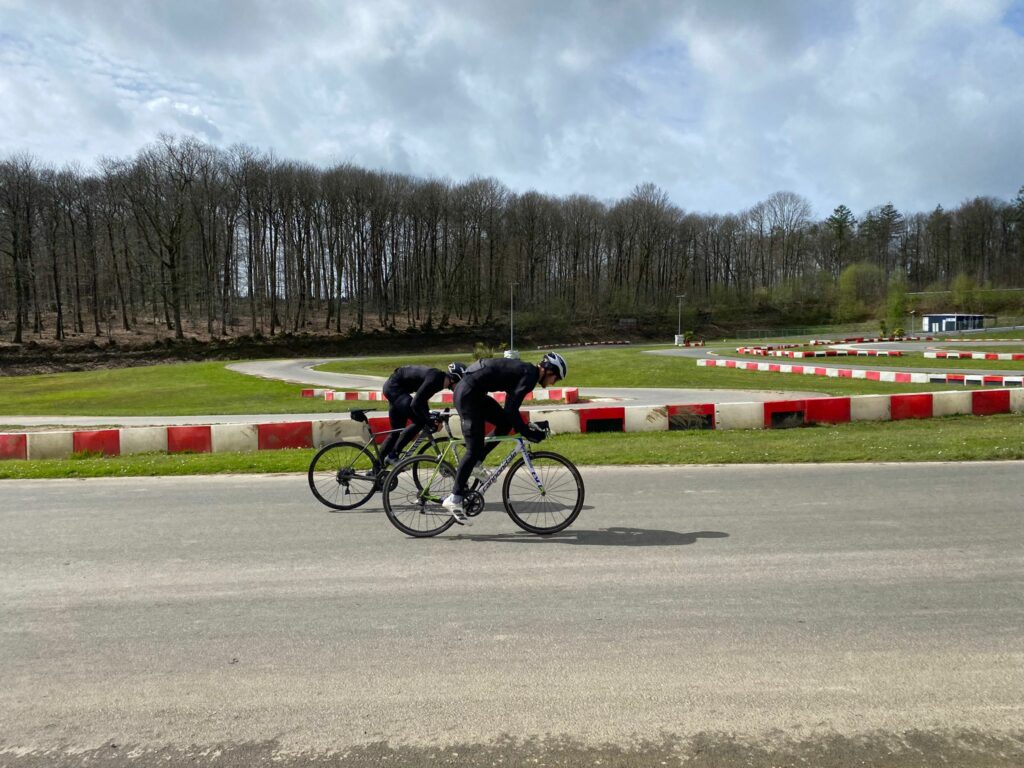Welcome to the MimeTIC Research Team Website

The MimeTIC research team focuses on designing methods for simulating virtual humans that behave in realistic manners and act with realistic motions. “Realistic” means that a real human would have behave and moved the same way in the same situation. It involves understanding how real people control their motion and behave in order to design models capable of generating realistic virtual humans. The main research axes of MimeTIC target Motion analysis, Autonomous virtual humans, and Physical activity in virtual reality.
Extended Reality applied to cycling – ShareSpace Project
In the framework of the ShareSpace project, Valentin Ramel, PhD student in the Mimetic research team, carried out an In Situ experiment with professional cyclists in Avranches (50), France.
“The aim of the ShareSpace project is to develop an extended reality (XR) training tool for cyclists.
The aim of this tool is to improve the skills of anticipating the launch of an attack by another cyclist in the peloton. This skill is important in a performance context: anticipating the launch of an attack means that you can react quickly to follow the offensive rider and take advantage of his draft to escape from the peloton.
Firstly, we are carrying out experiments in real conditions on a karting circuit. During these, top-level cyclists are asked to reproduce attack situations in groups of two or three. During all the experiments, the movement data of the cyclists and their bikes is collected using a motion capture system based on inertial units (IMU MoCap) and inertial units fitted to the bike. This data will be analysed to identify the kinematic variables that signal the launch of an attack (i.e. identify the gestural elements that signal a cyclist’s intention to launch an attack). These identified kinematic variables can then be used in XR: amplifying them will make it easier for the trained cyclist to gather information so that he can anticipate more easily at the start of XR training.
Following these initial experiments, we will be carrying out experiments in XR. The aim of these future experiments will be to evaluate the effect of XR training on the ability to anticipate the launch of an attack. Two study groups of amateur cyclists will undergo XR training. They will be exposed to a scenario in which they will ride in a virtual peloton. At certain points, the avatar in front of them will launch an attack that they will have to follow as quickly as possible. One group will train to follow attacks without amplification of the kinematic warning variables and the other group will follow attacks with amplification of the variables (significant amplification at the start of the training then gradual reduction). Pre- and post-training anticipation skills will be analysed in both study groups. In this way, we will be able to see whether these skills have improved thanks to the XR tool and whether or not the amplification of the kinematic variables increases the benefits of the training.”
L’équipe MimeTIC était présente au 48ᵉ congrès de la Société de Biomécanique à Grenoble.
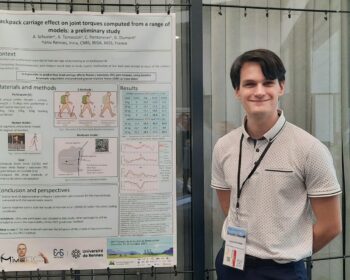
Oral presentation : Effect of mass addition on upper limb joint torques during meat cutting tasks: a parametric study (A. Tomezzoli, G. Dumont, and C. Pontonnier). Poster : Backpack carriage effect on joint torques computed from a range of models : a preliminary study (A. Schuster; A. Tomezzoli, A. Schuster,…
Congratulations Qian!
Qian Li successfully defended her PhD thesis entitled “Novel View Synthesis from Sparse Inputs” on October 17th 2023!
Congratulations Louise!
Louise Demestre successfully defended her PhD entitled “Analysis of performance criteria in springboard diving using a diver-diving board interaction model” on November 28th 2022!
Virtual Humans and Crowds in Immersive Environment (VHCIE) workshop has been accepted to IEEE VR 2021.
We welcome your contributions related to Virtual Humans and Virtual Crowds! Please visit our website for more details
Congratulations Florian!
Florian Berton successfully defended his PhD entitled “Immersive Virtual Crowds: Evaluation of Pedestrian Behavior in Virtual Reality” on December 14th 2020!
Congratulations Pierre!
Pierre Puchaud successfully defended his PhD entitled “Generic and specific musculoskeletal modeling for the support of the soldier’s physical activity.” on December 9th 2020!
Congratulations Anne-Hélène!
Anne-Hélène Olivier successfully defended her Habilitation à Diriger la Recherche (HDR) entitled “Coordinations visuo-motrices durant la locomotion : Une approche croisée entre les Sciences du Mouvement et les Sciences du Numérique pour l’analyse des facteurs situationnels et individuels impliqués dans les interactions entre marcheurs” on December 7th 2020!
Congratulations Simon!
Simon Hilt successfully defended his PhD entitled “Biofaithful Haptics for Virtual Reality interaction” on December 4th 2020!
Congratulations Amaury!
Amaury Louarn successfully defended his PhD entitled “A Topological Approach to Virtual Cinematography” on November 23th 2020! He will soon leaves and a start an engineer position in Vancouver, Canada.

